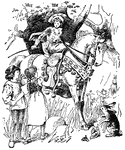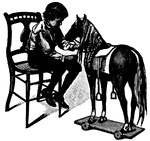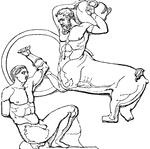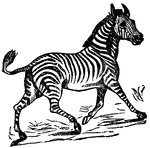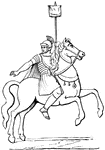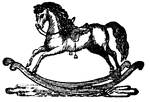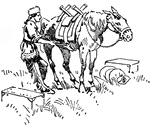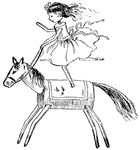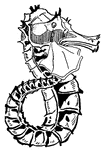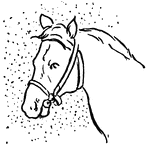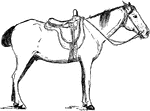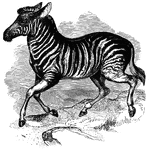
Dauw
"Is of a pale brown color; the underside of the body being whitish; head, body, and upper part of the…
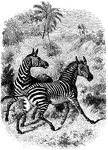
Zebras
"The ground color is white, or yellowish white, but the head, body, and legs to the hoofs are regularly…
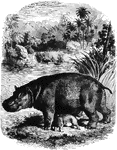
Hippopotamus
"Of this the muzzle is exceedingly thick and blunt, the head is very large, but the greater part of…
Railroad Trail
"Trail between Peter Cooper's locomotive Tom Thumb and one of Stockton's and Stokes' horse…

Ridgefield
Place of the barricade, Ridgefield. This view is at the north end of the main street. It was taken from…
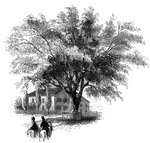
Washington Elm
"The Washington Elm. The horse seen in this sketch is one of the oldest in Cambridge, having been built…
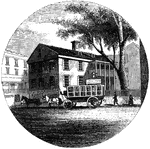
Providence Tavern
"Old Tavern in Providence. This view is from the market, looking north. The building stands on the east…

Seahorse
"These animals have a head of the shape of a horse, and a long tail without any fin, but which is used…

Scad
"Fifteen to twenty inches long; caught in great numbers on the coast of Ireland, and common on the British…
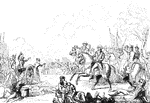
Monmouth
"The field of Monmouth. In the picture here given, the chief is seen most prominently on his white charger,…
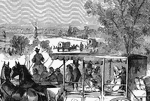
Grand Skedaddle - Horse-drawn Carriage
"The 'Grand Skedaddle' of the inhabitants from Charleston, S. C., when threatened by an attack from…
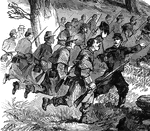
Battle of Mill Spring
"Battle of Mill Spring, on the Cumberland River, near Jamestown, between a confederate force, 8,000…
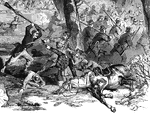
Battle of Mill Spring
"Battle of Mill Spring, on the Cumberland River, near Jamestown, between a confederate force, 8,000…
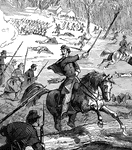
Battle of Mill Spring
"Battle of Mill Spring, on the Cumberland River, near Jamestown, between a confederate force, 8,000…

Lick Creek Bottom - Horse and Rider
"Advance of Federal troops on Corinth- the Carnival of Mud- scene at Lick Creek Bottom, between Pittsburg…
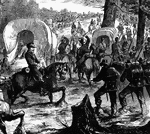
Lick Creek Bottom - In the Mud
"Advance of Federal troops on Corinth- the Carnival of Mud- scene at Lick Creek Bottom, between Pittsburg…
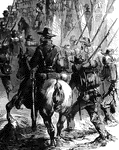
Lick Creek Bottom - Marching through the Mud
"Advance of Federal troops on Corinth- the Carnival of Mud- scene at Lick Creek Bottom, between Pittsburg…
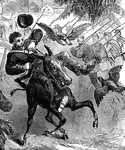
Foraging Spoils - Startled Horse
"Return of a foraging party of the Twenty-fourth Regiment, Connecticut Volunteers, with their spoils,…
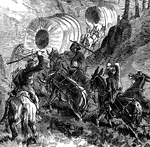
Baggage Train to Falmouth, VA
"Federal baggage train on its way to the army at Falmouth, VA., December, 1862. Our illustration represents…

Baggage Train Wagon
"Federal baggage train on its way to the army at Falmouth, VA., December, 1862. Our illustration represents…

Fort Watson
"Site of Fort Watson."—Lossing, 1851 The Siege of Fort Watson was an American Revolutionary War confrontation…

Cocktails
"The larvae are very similar to the perfect insects, both in appearance and habits. Many of them feed…
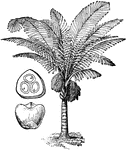
Arenga
"Areng. It yields a black bristly fiber resembling horse hair, which makes excellent cordage, and is…

Steam Fire Engine
"A Fire Engine is a machine employed for throwing a jet of water for the purpose of extinguishing fires.…
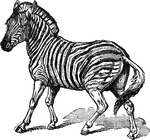
Burchell's Zebra
"Zebra is a popular name for any of the striped forms of the genus Equus; thus embracing the quagga,…

Ostrich
"The Ostrich is the largest of all living birds, standing from six to eight feet in height, and has…
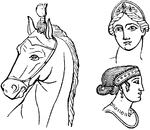
Amphyx
"Amphyces, Frontlets. A frontal, a broad band or plate of metal, which ladies of rank wore above the…
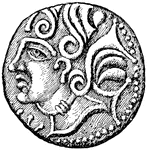
Coin of Diviciacus
The Coin of the King of the Suessiones, Diviciacus, with bust on front and prancing horse on back. Front.
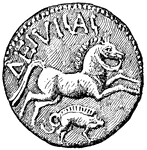
Coin of Diviciacus
The Coin of the King of the Suessiones, Diviciacus, with bust on front and prancing horse on back. Back.

Little Jack a Dandy
Little Jack a Dandy wanted some sugar-candy; And fairly for it cried; But little Billy Cook, Who always…

Signa Militaria
"Signa Militaria, military ensigns or standards. The most ancient standard employed by the Romans is…

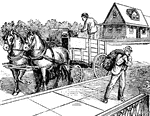

!["[Late 19th Century/Early 20th Century] United States Army Ambulance"-Whitney, 1902](https://etc.usf.edu/clipart/14600/14641/armyambul_14641_mth.gif)


